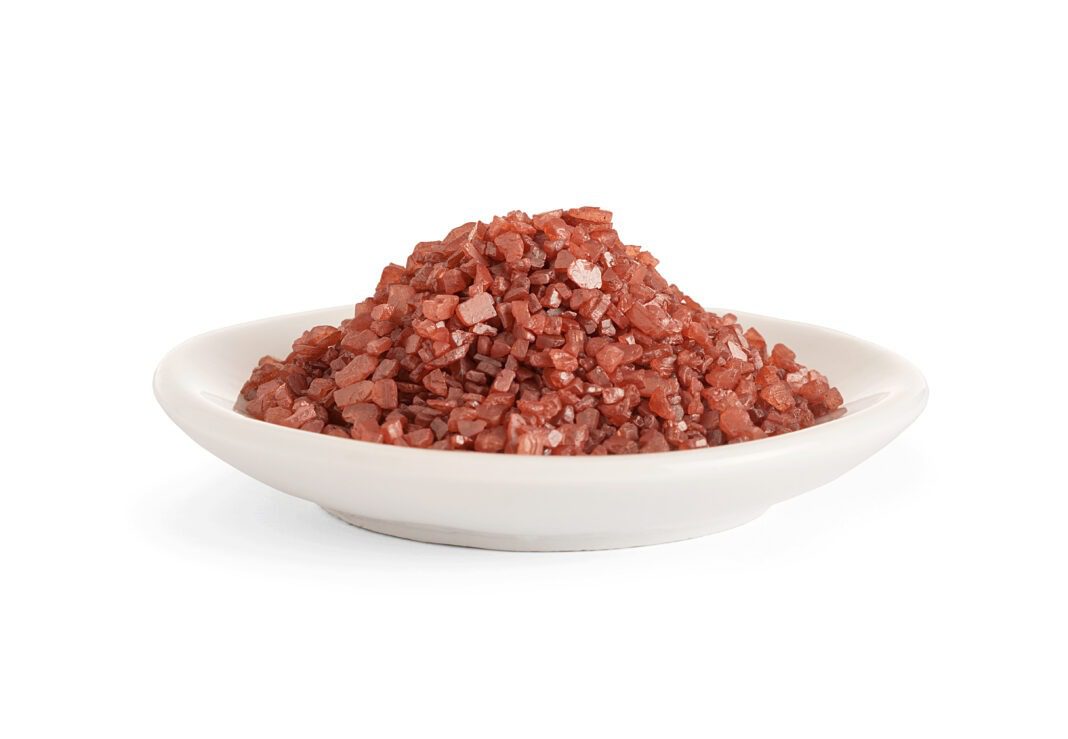Introduction
Hawaiian sea salt is an unrefined, full-flavored sea salt obtained by the evaporation of the seawater of Hawaii when heated by the sun. It has an irregular shape slightly earthy smell and is available as a fine & coarse crystal of 2-3 mm size. Hawaiian salt benefits are rich in minerals and low in sodium. Real Hawaiian salt is expensive and originally native to Hawaii. Hawaiian sea salt is available in two varieties: Red and Black
1. Red Hawaiian salt
Alaea salt is the sea salt mixed with Hawaiian volcanic red clay. It gives the salt terracotta or brick red in color. This salt is rich in minerals, and iron oxide slightly earthy clay smell, and has a ten-year shelf life. The Hawaiian island of Kauai is the main region for this salt and the most preferred natural salt in the world.
2. Black Hawaiian salt
Hawaiian Black Salt is also known as black lava salt, black salt, or black sea salt made after heating with activated charcoal to give it a silky smooth texture, slightly sulfuric aroma, and earthy flavor.
In this article, we discuss the brief information on Red Hawaiian salt.
History
Traditionally red Hawaiian salt was used to cleanse, purify, and bless tools, canoes, homes, temples, and healing rituals for medicinal purposes like treatment for broken bones, bug bites, burns, and various other ailments. However after the 19th century, red Hawaiian salt produced a large amount for export in American Northwest.
Composition of Hawaiian salt
Let’s take a closer look at the red Hawaiian salt composition (1).
| Compound | Amount |
| Moisture content (%) | 0.91 |
| Sodium chloride(%) | 84 |
| Calcium (μg/g) | <0.008 |
| Magnesium (μg/g) | 1.20 |
| Phosphorous (μg/g) | <0.6 |
| Potassium (μg/g) | <0.95 |
| Sodium (μg/g) | 400 |
| Sulfur (μg/g) | 1.00 |
Hawaiian salt benefits
1. Presence of naturally occurring minerals and electrolytes
Hawaiian red salt contains more than 80 healthy minerals, mainly consisting of sodium and chlorine as well as sufficient amounts of iron (digestible) and low levels of calcium, potassium, magnesium, phosphorus, sulfur, and other minerals as impurities. These nutrients help to regulate organ function and maintain electrolyte levels within the body (2).
2. Longer salt taste intensity
Hawaiian red salt dissolves slowly but salt taste lasting for just over one minute (66.3 s) as compared to Kosher salt which may be helpful to reduce food intake in obese persons (1, 3).
3. Keep skin healthy
Hawaiian red salt contains clay and hence it can be used as a face scrub or facial mask in combination with oil like coconut or olive which helps to attract and remove dirt and impurities trapped under the skin as well as smoothes and brightens the skin.
4. Lower or equal sodium content
Hawaiian red salt contains a lower or equal amount of sodium (84 % sodium chloride) as table salt which helps to maintain sodium-potassium balance ratios and thus protects from various diseases.
Use as a detoxifying agent- half a teaspoon of Hawaiian salt in 1 glass of water to purify the body.
Side effect of Hawaiian red salt
1. Presence of toxic compounds
As we know Hawaiian red salt contains a rich amount of minerals but it also contains some toxic compounds. Such as chromium thus precaution should be needed before consumption.
Hawaiian salt vs. Sea salt
Natural sea salt is also a less processed salt but it does not contain clay and charcoal. The color of the salt is white however Hawaiian salt is present in red and black in color, however, both contain trace minerals but give slightly different flavors.
Q&A
1. What so special about Hawaiian salt?
Hawaiian salt (Red and Black) contains smoke earthy flavor with its mineral content which exhibits various health benefits. Red Hawaiian salt contains a rich amount of iron oxide which has digestible dietary properties and black Hawaiian salt claims to detoxify the body however due to the lack of research or scientific evidence not sure about the treatment of any condition.
2. Is Hawaiian salt and sea salt the same?
A research study suggested that the darker color of salt showed a higher concentration of impurities and trace minerals that further affected the taste and nutritional value of the salt. The red and black color of Hawaiian salt represents a richer source of minerals than white one (normal sea salt) Although both salt is obtained from the sea and affected by ocean pollution which led to the addition of trace amounts of heavy metals and microplastics more research is needed to confirm this.
3. What is Hawaiian salt used for?
Native Hawaiian dishes use Hawaiian salts like in Kalua Pig, Hawaiian Jerky (pipikaula), and Poke. This salt is often used as a finishing salt for everything from stews to desserts like eggs, salads, or desserts and is used as a food preservative for fish, beef, and pork because of its mellow and almost sweet taste. It is also commonly used in bath and beauty products (4).
